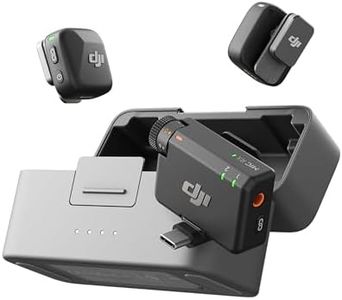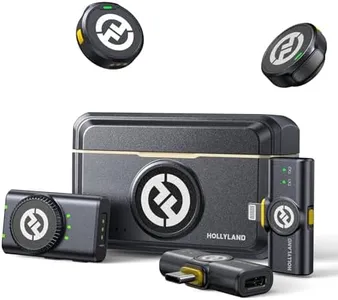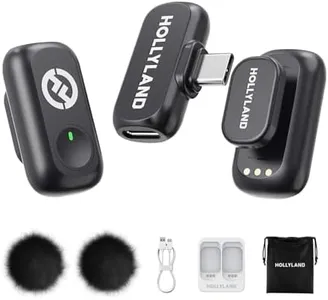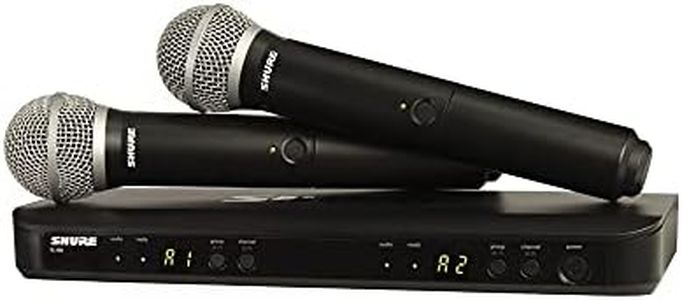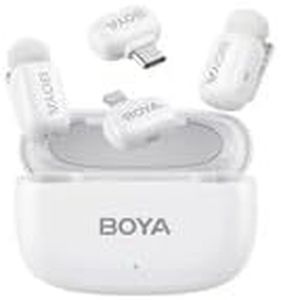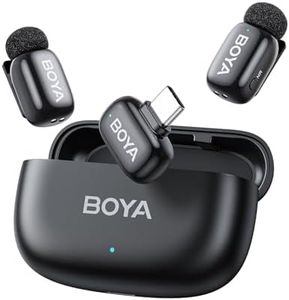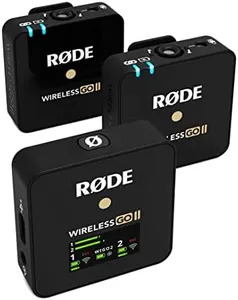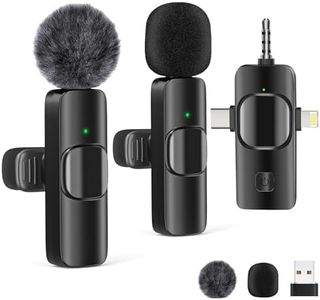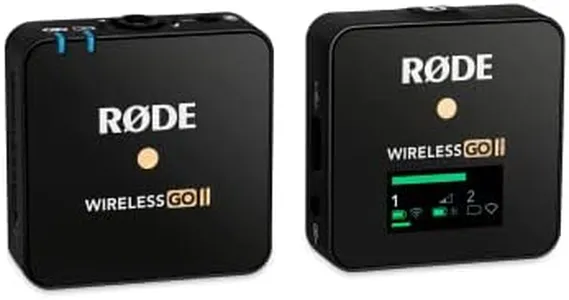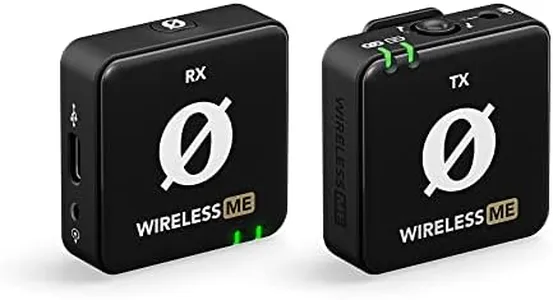We Use CookiesWe use cookies to enhance the security, performance,
functionality and for analytical and promotional activities. By continuing to browse this site you
are agreeing to our privacy policy
10 Best Wireless Microphones
From leading brands and best sellers available on the web.Buying Guide for the Best Wireless Microphones
Choosing a wireless microphone involves thinking about how you plan to use it, such as for presentations, performances, interviews, or video production. The right microphone will make a big difference in the sound quality, reliability, and ease of movement you experience. Start by knowing your usage scenario—whether you need something for singing, speaking, or recording—and then focus on matching the microphone's features to your environment (indoors, outdoors, crowded places, etc.), the number of users, and the equipment you already have. Understanding a few key specifications will help you pick a wireless microphone that works best for your needs.Frequency RangeThe frequency range of a wireless microphone refers to the radio waves it uses to transmit sound without cables. A broader or more flexible frequency range can help avoid interference with other devices and ensure a clearer signal. Some microphones operate on fixed frequencies, while others are adjustable across several channels. If you're using the microphone in a crowded area with lots of wireless equipment, a wider and selectable frequency range is helpful; in quieter or controlled spaces, fixed frequencies or smaller ranges are usually enough.
Transmission DistanceTransmission distance is how far you can move from the receiver before the microphone connection starts to drop out. Some microphones are designed for short distances (like speaking at a podium), while others can work reliably from across large stages or auditoriums. Consider how much you'll move during use—the more freedom you need, the greater the required transmission distance. Always check the real-world performance, as walls and electronic interference can significantly affect range.
Microphone Type (Handheld, Lavalier, Headset)Wireless microphones come in various types, including handheld (like those singers or MCs use), lavalier (clip-on, great for presenters), and headset (worn over the head, ideal for active users like fitness instructors). Each type fits different needs: handhelds offer flexibility but must be held, lavaliers are discreet and convenient for speech, and headsets stay secure during movement. Choose the style that matches how you’ll use the microphone most often.
Battery LifeBattery life tells you how long the microphone will work on a single charge or set of batteries, which is essential for events or shoots that last several hours. Some microphones use rechargeable batteries, while others use replaceable ones. Longer battery life reduces the risk of outages during important moments. Think about your typical session lengths—longer life is better for extended use without easy access to charging or swapping batteries.
Sound Quality (Frequency Response, Signal-to-Noise Ratio)Sound quality is influenced by specs like frequency response (how well the microphone captures high and low sounds) and signal-to-noise ratio (how much unwanted background noise is picked up). A wider frequency response means more natural sound, while a higher signal-to-noise ratio means clearer audio with less hiss or static. If accurate, detailed sound is important—like for singing or professional recordings—look for microphones with a broad frequency response and a high signal-to-noise ratio.
Connectivity and CompatibilityConnectivity is about how the microphone links to other devices such as mixers, cameras, or amplifiers. Some wireless microphones work with specific receivers, while others are more universal. Make sure your wireless microphone system is compatible with your existing equipment, and check what kind of outputs are available. Consider your setup and verify that the microphone will connect smoothly to avoid last-minute surprises.
Interference ResistanceInterference resistance describes how well the microphone system avoids glitches or dropouts caused by other wireless signals (like Wi-Fi or Bluetooth). Some systems use special technologies or frequency bands to reduce this risk. If you plan on using the microphone in places crowded with electronics or multiple wireless devices, prioritizing strong interference resistance is important for reliable, uninterrupted sound.
